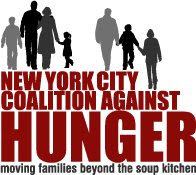 A federal judge vindicated 36 delivery workers at two Saigon Grill Restaurants, who were paid less than $2 an hour and fined up to $200 for infractions as minor as letting a restaurant door slam. The workers were awarded a cumulative $4.6 million in back pay and damages, with individual workers receiving up to $328,000.
A federal judge vindicated 36 delivery workers at two Saigon Grill Restaurants, who were paid less than $2 an hour and fined up to $200 for infractions as minor as letting a restaurant door slam. The workers were awarded a cumulative $4.6 million in back pay and damages, with individual workers receiving up to $328,000. “It was worth the fight,” said deliveryman Yu Guan Ke, “because we were treated so badly for so long.” He plans to use the money to buy health insurance for himself and his family.
The verdict underscores widespread inequity in the food service industry, which mirrors the wider economic inequity that causes food insecurity. The case served as a warning for employers who refuse to comply with federal and state minimum wage laws. “Many restaurants have already started to pay their deliverymen much better,” said Josephine Lee, an organizer for Justice Will be Served.
Though touted as a victory for low-income, paying food service employees even the state minimum wage of $7.15 an hour will likely not be enough to ensure the food security of the workers and their families. Until the creation of a federal living wage, many food service workers who serve New Yorkers will continue to be unable to adequately feed themselves.




